#not to mention that Spain has an extended history of ruling parts of Italy
Explore tagged Tumblr posts
Note
Sorry but we were speaking about history in a part of one of my classes and when the Vatican came on. I had to draw the sad dog man.
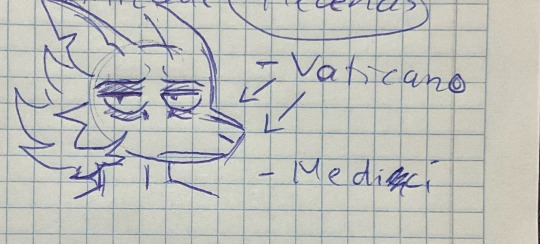
Machete is now immortalized in my class notes. It’s in spanish by the way, which is kind of funnily appropriate considering latin is very close to spanish.
.
#augh that's adorable!#“Vaticano” -> -> cue sad dog man#he doesn't seem very happy to be there#I've said this before and I don't really know why#but I keep finding the idea of people drawing little Machetes in post-it notes pieces of scrap paper and class notes#endlessly charming#it's so cute#it sparks joy#thank you!#Spanish and Italian are fairly closely related they're both descended from Latin and I think that's terribly nifty#I'd like to believe Machete speaks or understands Spanish at least passably#mostly due to continued exposure and for having a knack for languages#Spain was an influential superpower in the 16th century and also intensely Catholic so he ends up working with Spaniards on a regular basis#and he strikes me as a kind of person who would like to know what they're saying to each other even if he kept it to himself#not to mention that Spain has an extended history of ruling parts of Italy#the southern half of the country in particular#including the places where he grew up#gift art#nerium-aquifolium#own characters#Machete
303 notes
·
View notes
Text
The Age of Louis XIV

Voltaire, who wrote Le sciècle de Louis XIV (The Age of Louis XIV), started off by doing a recount of the states of Europe before Louis XIV. and my hetalia brain rot began to go wild so i figure this can help me understand the first chapter of the book better so I sorted out quotes and made a brief summary for each mentioned nation in order that is written in the book to help enforce my understanding.
Germany*
*- "Germany" refers to the Empire of Germany, known in history as the Holy Roman Empire; since the 15th century, its throne had been occupied by the Habsburgs

"...the most powerful neighbor which France has...it abounds more with sturdy men inured to labor." "this great Germanic body...is maintained in [... ] order and regularity [...] The difference of government and genius makes...the Germans [more proper] for acting on the defensive."
Summary: strong, divided into two parties by Christianity. Emperor has less power in compare to a King in France. Was at the time pretty poor despite being "rich at home", and would eventually see its flourishing later on.
Spain
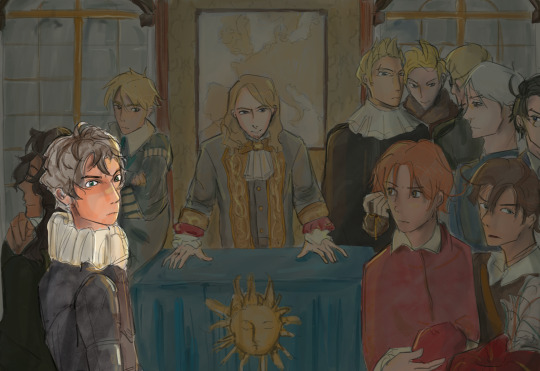
"...more formidable to Europe than the Germanic Empire. The kings of Spain were infinitely more absolute and rich than emperors..." "[Spain] under Philip II became a vast body without substance, which had more reputation than real strength...Notwithstanding all these disadvantages, Spain, by being united to the empire, threw a very formidable weight into the balance of Europe."
Summary: strong #2, starting to see its weak points, but still a ringing force and surviving well with the colonies.
Portugal
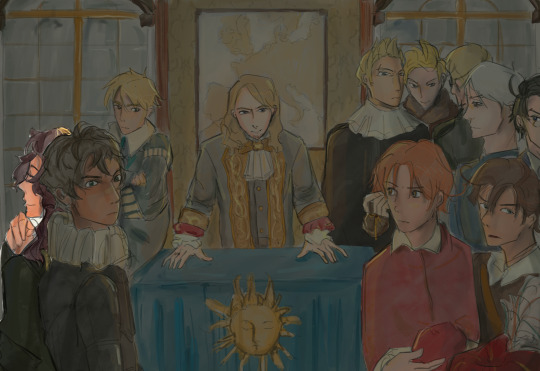
"...Portugal was again made a kingdom...through necessity, cultivated trades...entered into a league with the French and Dutch against Spain." "Portugal...extended its trade, and augmented its power..."
Summary: doing well over there. Shall watch your career with great interest.
The United Provinces
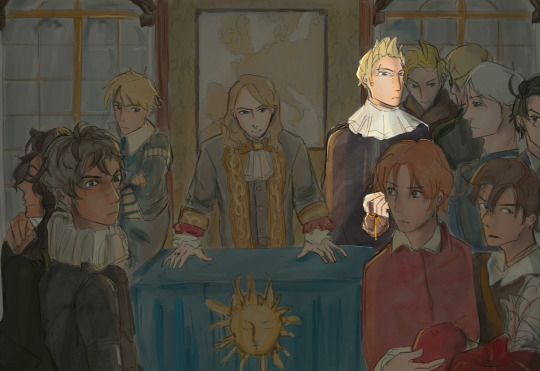
"...almost the only example in the world of what may be done by the love of liberty and unwearied labor. There poor people...made head against the whole collected force of their master and tyrant...and founded a power which we have seen counterbalancing that of Spain itself." "...they established a form of government which preserves...equality, the most natural right of human kind."
Summary: quite an admirable force (don't mess with the Dutch's money bags™️). Good government.
England
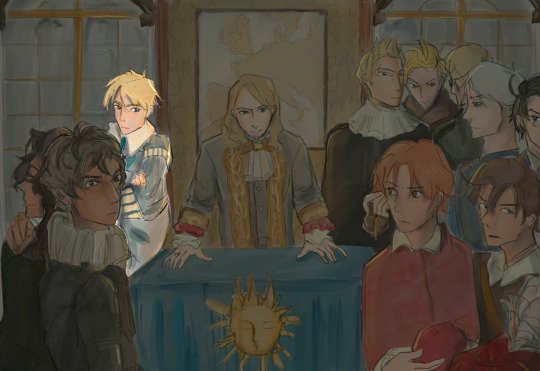
"England...arrogated to itself the sovereignty of the seas, and pretended to preserve a balance between the powers of Europe." "This civil war...[made England] lost [...] credit in Europe...trade was obstructed, and other nations looked upon [England]...till the time that she at once became more formidable than ever, under the rule of Cromwell."
Summary: pirate arc of England sprouting. Charles I could do well in anything but being a king ("ill-advised prince"). Waiting for Cromwell to do his thing.
Rome/The rest of Italy
I merged these two parts together for ✨aesthetics✨
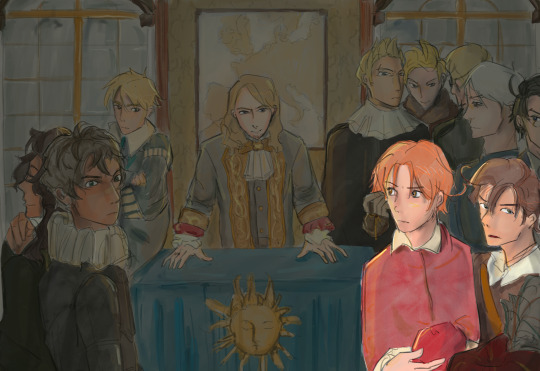
"[Rome] has very little trade or money. [Rome's] spiritual authority...is slighted and abhorred by one half of Christendom...yet [...] some [...] resist [Rome's] will at times with reason and success." "but [the privileges] of Rome, by an almost constant proper use of resolution and concession, has preserved all that was humanly possible for her to preserve." "Some rights, many pretensions, patience and politics are all that Rome has left now of that ancient power..."
Summary: typical pope behavior, but in reality was losing respect and control. Impressively that was dealt with seasoned insight, and different oppositions of different kings/emperors were met with different levels of defense ("submissive...terrible to..acting cunningly"). Sly old fox, if you will.
"...situated in a peaceble country...biassed by various interests." "The state of Florence enjoyed tranquility and abundance under [...] Medici; and literature, arts, and politeness [...] still flourished there."
Summary: the typical Renaissance still doing the thing. Less disturbed by conflicts compared to the northern parts.
The Northern Kingdoms
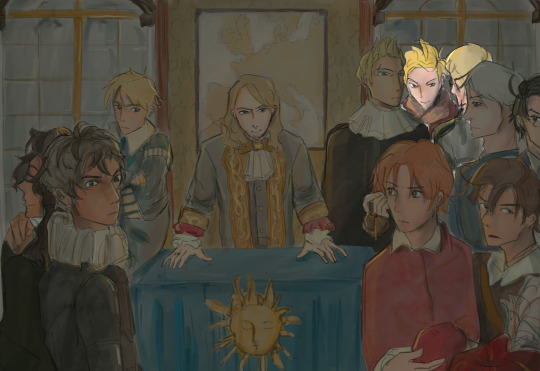
"The Swedes [...] were a freer nation by their constitution which admits even the lowest class of the people into the assembly of the general estates." "Denmark...was no longer so [formidable] to any power."
Summary: Sweden good. Denmark flopping a bit. The rest of the northern kingdoms were doing their best (fighting)
The Turks

"The seraglio, though corrupted by effeminacy, still retained its cruelty...when it had [recovered from wars], this empire became again formidable."
Summary: may look messy back home but still don't underestimate the power
The situation of France

"France [...] was in alliance with Sweden, Holland, Savoy and Portugal...was engaged in a war against the empire of Spain...The French there has done the Spaniards and Germans a great deal of mischief, and had suffered as much themselves."
Summary: fighting with Spain (and also the house of Austria, so also Germany), tho the battles has reduced to petty squabbles over "a few frontier towns". Richelieu came to raise tax.
---
Works cited The Works of Voltaire. A Contemporary Version. A Critique and Biography by John Morley, notes by Tobias Smollett, trans. William F. Fleming (New York: E.R. DuMont, 1901). In 21 vols. Vol. XII.
--- Rambling (just a little) time.
Okay first off, bear in mind that all the quotes and summarized content are from the pov of Voltaire, so there can be possible biases.
I've been invested in the reign of Louis XIV for quite a while now, and I can attribute the reasons to 1) BBC Versailles, 2) Molière, and 3) general liking to history at the time (17-18c). I'm trying to figure out what exactly that the time period attracted me so much, like what "vibe" what "ideal" etc, but I'm still trying. And reading that book, which is long as hell, not to mention the messy af™️ European drama and people having Too Similar Names may just be helpful in terms of getting to know the history that happened in and around the court of Louis XIV.
Welp, gotta read more if I want to know more.
#hetalia#aph#historical hetalia#i will be lazy and not tag everyone sorry not sorry#doodle dump#random otter rattles#history
181 notes
·
View notes
Text
Anthony Janzoon Van Salee (1607-1676): First recorded Muslim settler in Colonial North America, a profile.
In part of researching history, genealogy is one aspect of history that is appealing as well. Mostly, because its the story of how one comes to be. From both of my grandfathers my ancestry extends to the colonial settlement of North America back in the 17th century. That ancestry is a mix of English, Irish, Scottish, Welsh, French, German and Dutch among others. One of the most interesting and unexpected finds in my ancestry was that of Anthony Janzoon Van Salee, who was my 9th great-grandfather. Anthony is notable for two primary reasons, first the detailed record of his character and deeds and secondly, his religion and unique parentage and upbringing.
Anthony was born around 1607 in Cartagena, Spain the son of an interesting pairing. His mother was recorded as a Moorish woman, known only as Margarita. Her own ethnic background and history is lost to time and only a matter of speculation. She was only positively identified as a Moor which has no ethnic connotation but a religious one, meaning she was a Muslim who had inhabited Spain. She could have been of a Berber or Arab background or most likely been of European Spanish descent in a family that had converted to Islam during the days of the Moorish Conquest of Iberia, though definitively there is no record of this known. Anthony’s father was Jan Jansen or Jan Janzoon Van Haarlem (c.1570-c.1641). Jan was a Dutch privateer or sailor in the service of the Dutch Republic, then trying to establish its independence from the Hapsburg-Spanish Monarchy during the Eighty Years War (1568-1648). Jan’s early life is little attested to other than he married a Dutch woman and started a family with her, though his profession at sea kept him away at times and he subsequently abandoned his Dutch family. He is known to have entered into a “union” with Margarita at this time. They had four sons, of which Anthony was the second born. Jan mostly attacked Spanish ships but is known to have attacked ships of all nations and made runs into the Barbary Coast of modern day Morocco, Algeria, Tunisia and Libya which at time were nominally part of the Ottoman Empire but were in fact semi-autonomous city states that had as their source of income, piracy and slavery. European slaves destined for all parts of the Muslim world were their primary source of income. Jan Janzoon himself was captured in 1618 and converted to Islam, in the words of Europeans he had “turned Turk” which was a euphemism for all Islamic conversions at the time, since all Muslims were associated with the Ottoman Turks.
Jan Janzoon eventually became renamed Murat Reis the Younger and became quite the powerful Barbary pirate. His knowledge of European coasts would take him to great distances the Barbary pirates had not yet undertaken. He also was a master of deception, from his days as a Dutch privateer, he and his crews would fly friendly or neutral flags to lull their targets into a false sense of security before attacking with swift ferocity. He setup his base in Salee or Sale Morocco, opposite the river bank of the modern capital in Rabat. Sale had a small but nice natural harbor from a river flowing into the Atlantic coast. There a Republic of Sale (1624-1668), a short lived independent Barbary Republic existed with Murat Reis serving as its first President/Grand Admiral of the Republic leading the dreaded Sale Rovers and their distinct corsair ships. Murat ventured at one point back to the Dutch Republic where the authorities tried to sway him back by bringing forth his original Dutch family to no avail. Though it did reconnect him with his children from his first marriage, namely his daughter Lysbeth, who would visit him later in life. During this time, his sons with Margarita were all brought up Muslim and lived with him in Sale, including Anthony.
Murat would set up base on small islands off the coast of England namely Lundy Island in the Bristol Channel and he was responsible for the pirate slave raid on Baltimore, Ireland where English settlers were abducted and sold into slavery and as far away as Iceland in the so called Turkish raids of 1627. That same year due to political instability in Sale, he moved his family and operations to Algiers, Algeria. He also conducted raids in Italy, Spain and France and the surrounding islands. He often was known to attempt to convince other Europeans to convert to Islam and though he was known to secure the release of his fellow Dutch from other pirates. 1635 saw him captured by the Knights of Malta where he was imprisoned on Malta for five years before being released after a Barbary raid on the island. He was restored to Barbary service in 1640 and returned to Morocco and was visited by his daughter Lysbeth during this time. He was serving as a governor of the fortress of Oualidia. Though he lived a life of luxury he was older and enfeebled by age and imprisonment. No record of his life beyond here is mentioned and he likely died shortly thereafter. The story continues with his son Anthony and the New World.
Anthony was known as Anthony Janzoon Van Salee though the specifics of his childhood are little known other than his parentage, his being raised Muslim and living variously in Spain, Morocco and Algeria during his youth. However, due to his Dutch ancestry and his father’s connections he made his way to the Dutch Republic as a young adult and in 1629, he married a Dutch-German woman by the name of Grietse Reyniers and in 1630 under the auspices of the Dutch West India Company, he and his wife left Amsterdam for North America and a colonial life in the New Netherlands colony, the city of New Amsterdam was their destination, the precursor to modern New York City. Initially, Anthony lived in Manhattan. It is speculated that his father left him considerable wealth and as such he was able to independently purchase land with his inheritance and became a prominent and successful farmer, merchant, landholder and creditor within the colony. His farm was located on present day Wall Street in Lower Manhattan.
The Dutch were known for their relative tolerance of certain matters but were primarily driven by a capitalist free enterprise ethos, a legacy instilled in their American descendants’ ideology. In matters of religion, Anthony appears more pragmatic than anything, his Islamic upbringing did not stop his at least nominal conversion to Dutch Reformed Calvinist Christianity. He and Grietse appear to have ever since their arrival been nominal Christians and their four daughters, including my 8th great-grandmother Sara Jansen (Emans) married into prominent Dutch Christian colonial families. By that same token, Anthony may have practiced Islam privately and is known to have kept a copy of the Qu’ran and read from it at times, it was later sold at auction. Anthony and Grietse were also reported in records of the time as being characters about town, in records from 1638-1639 there were responsible for 15 out 93 court cases in the colony. Everything from cases of slander, drunken behavior, to property disputes and pointing his guns at neighbors and colonial authorities who angered him. Anthony was also known for his outspoken character in defense of minorities including better treatment of African slaves, and audaciously housing an English Quaker in his house in defiance of the Dutch Reformed Church’s strict rules. He became so defiant to the colonial authorities and religious leaders that he and his family were eventually booted from the colony for their disturbing the peace and for not being devout enough in their Christianity, but he appealed the decision and a compromise was made, he had to leave Manhattan but he was allowed setup a new farm and purchased land in nearby modern day Gravesend, Brooklyn and Coney Island. He was friendly with his neighbor and Gravesend founder, English Anabaptist, Lady Deborah Moody, the only known woman to establish a colony in North America. This new colony setup was in part a collaboration with the Dutch West India Company who sought to add more settlers and was allowed for total religious freedom as part of the attraction, which was in line with Anthony’s somewhat loose religious affiliations. His wife Grietse preceded him in death and he remarried another Dutch woman who was a Quaker she supposedly helped bridge some of the damaged relations between him and the church, making him more tolerant of it which in turn made them relatively tolerant of him. He died in 1676 still a successful farmer and landholder despite his relative alienation within the colony.
Anthony’s physical appearance is unverified he was described at quite tall for the time period and very strong in build. Beyond on that all physical descriptions are varied and hard to discern with any accuracy.
There you have the story of the first recorded Muslim within American history, a character with an interesting and unique backstory, the son of a Dutch sailor turned successful Barbary pirate. A story of one who entered European society with one foot in the door, the other ever the outsider and his personality and deeds reflected this. He was a capitalist, defender of the rights of minorities, pragmatic in his religion, proud of his past and proud of his business accomplishments and willing to stick up for himself, true to himself as much as he could be. In some ways a precursor to the quintessential early American: enterprising, skeptical and defiant of authority, a pioneer in more ways than one. On a personal note I’m quite glad to count him among my ancestors and am truly fascinated by his story and the little portrait/slice of life it gives in colonial America and in particular the Dutch influence on the stew of ideology that later lead to the American Revolution and USA itself.


#new amsterdam#new netherland#dutch#moroccoan#new york#usa#colonial america#new world#barbary pirates#salee#algiers#tunis#dutch west india company#manhattan#brooklyn#history#17th century#islam#dutch reformed#quakers
6 notes
·
View notes
Text
Week 13-Ch.11
The Early Middle Ages refers to the beginning of the seventh century to the end of the tenth. Islam Art, The Great Mosque, Anglo-Saxon Metalwork, Hiberno-Saxon Art, Palace Chapel, Manuscripts and Monasteries all have a big impact on this time period.
Islam means submission to God’s will, which refers to the religion. Muhammad, a prophet who founded Islam had only control of Arabia around the time of his death in 632. With the amount of fights that had involved the Middle East which had been run by Muslims, this area soon spread to Afghanistan, Portugal, Spain and some of southwest France. Within this expansion, became Christianity.
Muslim ruler of Spain, Adbar-Rahma-n I and the expansion of the West, had to introduce new mosques for all the new territory. He had also gotten one built in his home town. Islamic architecture in Western styles have extended their artistic abilities and enlarged the construction multiple times! Around the 13th century, Christians turned these into churches. These mosque’s are especially unique due to where they came from. The columns and designs had originated from Roman to Early Christian buildings, which had now, been used to decorate and hold mosques for their architecture.
To me, the mosques look a lot like temples or palaces like the pharaohs and different rules used to proclaim and make known where they lived. I think that the Early Middle Ages had gotten many of their ideas from these other cultures, like earlier ones did before them and so on. I find it rather fascinating that they had even thought of this to begin with. I have mentioned in my other blogs about how art has been copied before which either destroys the origination or ruins the meaning of it before. I feel as though this is another example, but for good reasons. We’re always being taught history (even in this class) and how important it is today because it’s been shaping our futures and the past for decades. I believe, all in all, that the reasons behind the madness of all of this is to create a more noble and “better” culture than the rest. There’s always another “one up” idea that shapes a culture and really makes it their own. No two are the same, but only similar.
Out of this entire chapter, I’d have to say my favorite is the Palace Chapel. It’s just the size of the place. It’s so incredible and I wish to go there one day. I’d love to see how truly big it was not just from pictures. This Chapel consists of offices, workshops, and other smaller buildings. This had big meaning for Charlemagne because he used it for his own worshiping and for imperial courts. He was also the Roman emperor crowned by the Pope. He had great power over parts of western Europe including France, Germany, Switzerland, Belgium, Holland, northern Spain and Italy. This time period was the Carolingian Period in which it comes from Charlemagne’s grandfather.
In all, this chapter had lots of rulers and still had emperors. There was so much that had been ruled over, even under one ruler, especially Charlemagne. I loved the Palace Chapel, but also the amazing art that consisted of this time period. I am hoping to one day learn more of this and be able to explore the amazingly power Palace Chapel that holds most of Earth’s history itself!
1 note
·
View note
Text
Water Jet Technology and Accessories
Water Jet Technology and Accessories
KMT Waterjet is an award winning high-volume waterjet and fabricating machine designed and developed by the KMT Group of industries in China. The original KM Technology was developed to satisfy specific performance and dimensional requirements of high volume wet dye applications. Subsequent developments have optimized the performance of the machine, extended its service life, reliability and durability, and increased its ability to meet growing customer demand. A comprehensive market analysis reveals a number of growing markets for this well-proven water jetting equipment.
One of the most growing segments in the applications area is the abrasive waterjet cutting, also known as wet or dry cutting. The first kmt waterjet cutter was designed to perform an abrasive waterjet cutting job in an aluminum alloy substrate with standard dielectric thickness. This job could then be used for abrasive waterjet cutting, stamping, erosion cleaning, erosion blasting, abrasive waterjet cutting on alloy steel and copper, etching, and other metal operations. While this application has remained a steady solution to the abrasive waterjet cutting need, other equally useful applications have evolved such as the use of the machine to dry sheet metal at low pressures. With increasing pressure requirements, sheet metal workers can now apply a variety of coatings at much higher temperatures using the original kmt waterjet equipment.
Another popular application for the kmt waterjet cutting pumps is abrasive washing and abrasive blasting. Abrasive water jetting is widely used in the production of tile, concrete, slag and steel products. Abrasive washing and abrasive blasting require a powerful, high-pressure stream of water to remove small quantities of unwanted material and create a smooth surface finish. Often this service is combined with other abrasive finishing systems. As an example, coining can be performed after abrasive blasting to produce the finished product with a textured, engraved or flakey finish. Waterjet cutting pumps coupled with dedicated hoses and equipment are most often used in the final phases of abrasive washing and abrasive blasting.
The kmt waterjet pump is normally attached to a robotic device to extend its life. Once installed, the pump is capable of working in extreme temperatures, up to 180 degrees Celsius, as long as it receives sufficient air pressure and adequate hydraulic flow. Depending on the type of job being performed, some systems provide up to ninety,000psi of pressure. This extreme pressure is essential to perform a variety of tasks and requires the highest quality machining parts.
As its name implies, the kmt waterjet market share machine uses pure water as a lubricant. It operates at extremely high pressures, up to a mere seventy thousands. However, it should be noted that while pure water is extremely effective in performing many tasks, it is also very harsh on delicate and rare metal alloys such as platinum. Moreover, as a rule, the abrasive material used for this process is copper based; hence a thorough knowledge of your specific alloy and the manufacturer's recommendations is critical before undergoing this procedure.
Waterjet technology uses the principle of the vibratory mixing of water with abrasive material. A smooth flat surface is first passed through a high-speed cutter, resulting in the generation of a fine spray of abrasive particles. These particles are then directed to a nozzle, where they are released along with the original water. The resulting soft materials include the cutting head, which is generally made from steel or aluminum and sometimes includes ceramic or silicon elements for extra hardness and wear resistance.
The principle behind the operation of the water jet cutting systems is much the same as that used in sanding and polishing. For example, one dimensional cuts require a fine spray of water on the surface to produce a sharp edged finish. On the other hand, the soft cut produces a more rounded result with more even distribution of the abrasive material across the surface. This is a much better method than the use of solvents for final finishing and results in much smoother and better finished flooring.
There are many manufacturers in the market that offer high pressure waterjet equipment and accessories, most notably the set high pressure waterjet pumps and parts. The pumps feature a variable speed drive system with variable speed controls that allows them to be operated easily by the homeowner. Other accessories available in the range include the tools and fixtures required for maintenance and cleaning of the unit.
The research team projects that the Waterjet Cutting Machinery (Waterjet Cutting Machines) market size will grow from XXX in 2020 to XXX by 2027, at an estimated CAGR of XX. The base year considered for the study is 2020, and the market size is projected from 2020 to 2027.
The prime objective of this report is to help the user understand the market in terms of its definition, segmentation, market potential, influential trends, and the challenges that the market is facing with 10 major regions and 50 major countries. Deep researches and analysis were done during the preparation of the report. The readers will find this report very helpful in understanding the market in depth. The data and the information regarding the market are taken from reliable sources such as websites, annual reports of the companies, journals, and others and were checked and validated by the industry experts. The facts and data are represented in the report using diagrams, graphs, pie charts, and other pictorial representations. This enhances the visual representation and also helps in understanding the facts much better.
By Market Players: Flow International Omax KMT AB Sugino Machine Bystronic Group CMS Industries Dardi Jet Edge Inc Shenyang APW Water Jet Sweden Resato WARDJet Inc. KNUTH Machine Tools Yongda Dynamo Electirc Waterjet Corporation ESAB Cutting Systems H.G. Ridder MicroStep Perndorfer Maschinenbau KG KIMLA Eckert TECHNI Waterjet Sino Achieve Kimblad Technology STM Stein-Moser GmbH Shenyang Head OH Precision Corporation Soitaab Impianti LDSA Rychlý TOM Daetwyler Fässler Semyx, LLC A. Innovative International STM Waterjet International Waterjet Caretta Technology imes-icore GmbH CT Cutting Technologies & Machinery Baykal Machine Tools Axiome SAS
By Type Pressurized Water Abrasive Mixture
By Application Automotive OEMs Automotive Supplier Stone & Tiles Job Shop Aerospace & Defense Others
By Regions/Countries: North America United States Canada Mexico
East Asia China Japan South Korea
Europe Germany United Kingdom France Italy Russia Spain Netherlands Switzerland Poland
South Asia India Pakistan Bangladesh
Southeast Asia Indonesia Thailand Singapore Malaysia Philippines Vietnam Myanmar
Middle East Turkey Saudi Arabia Iran United Arab Emirates Israel Iraq Qatar Kuwait Oman
Africa Nigeria South Africa Egypt Algeria Morocoo
Oceania Australia New Zealand
South America Brazil Argentina Colombia Chile Venezuela Peru Puerto Rico Ecuador
Rest of the World Kazakhstan
Points Covered in The Report The points that are discussed within the report are the major market players that are involved in the market such as market players, raw material suppliers, equipment suppliers, end users, traders, distributors and etc. The complete profile of the companies is mentioned. And the capacity, production, price, revenue, cost, gross, gross margin, sales volume, sales revenue, consumption, growth rate, import, export, supply, future strategies, and the technological developments that they are making are also included within the report. This report analyzed 12 years data history and forecast. The growth factors of the market is discussed in detail wherein the different end users of the market are explained in detail. Data and information by market player, by region, by type, by application and etc, and custom research can be added according to specific requirements. The report contains the SWOT analysis of the market. Finally, the report contains the conclusion part where the opinions of the industrial experts are included.
Key Reasons to Purchase To gain insightful analyses of the market and have comprehensive understanding of the global market and its commercial landscape. Assess the production processes, major issues, and solutions to mitigate the development risk. To understand the most affecting driving and restraining forces in the market and its impact in the global market. Learn about the market strategies that are being adopted by leading respective organizations. To understand the future outlook and prospects for the market. Besides the standard structure reports, we also provide custom research according to specific requirements.
The report focuses on Global, Top 10 Regions and Top 50 Countries Market Size of Waterjet Cutting Machinery (Waterjet Cutting Machines) 2016-2021, and development forecast 2022-2027 including industries, major players/suppliers worldwide and market share by regions, with company and product introduction, position in the market including their market status and development trend by types and applications which will provide its price and profit status, and marketing status & market growth drivers and challenges, with base year as 2020.
Key Indicators Analysed Market Players & Competitor Analysis: The report covers the key players of the industry including Company Profile, Product Specifications, Production Capacity/Sales, Revenue, Price and Gross Margin 2016-2021 & Sales by Product Types. Global and Regional Market Analysis: The report includes Global & Regional market status and outlook 2022-2027. Further the report provides break down details about each region & countries covered in the report. Identifying its production, consumption, import & export, sales volume & revenue forecast. Market Analysis by Product Type: The report covers majority Product Types in the Waterjet Cutting Machinery (Waterjet Cutting Machines) Industry, including its product specifcations by each key player, volume, sales by Volume and Value (M USD). Markat Analysis by Application Type: Based on the Waterjet Cutting Machinery (Waterjet Cutting Machines) Industry and its applications, the market is further sub-segmented into several major Application of its industry. It provides you with the market size, CAGR & forecast by each industry applications. Market Trends: Market key trends which include Increased Competition and Continuous Innovations. Opportunities and Drivers: Identifying the Growing Demands and New Technology Porters Five Force Analysis: The report will provide with the state of competition in industry depending on five basic forces: threat of new entrants, bargaining power of suppliers, bargaining power of buyers, threat of substitute products or services, and existing industry rivalry.
COVID-19 Impact Report covers Impact of Coronavirus COVID-19: Since the COVID-19 virus outbreak in December 2019, the disease has spread to almost every country around the globe with the World Health Organization declaring it a public health emergency. The global impacts of the coronavirus disease 2019 (COVID-19) are already starting to be felt, and will significantly affect the Waterjet Cutting Machinery (Waterjet Cutting Machines) market in 2021. The outbreak of COVID-19 has brought effects on many aspects, like flight cancellations; travel bans and quarantines; restaurants closed; all indoor/outdoor events restricted; over forty countries state of emergency declared; massive slowing of the supply chain; stock market volatility; falling business confidence, growing panic among the population, and uncertainty about future.
For more details contact as https://www.reportmines.com/contact-us.php
0 notes
Text
What are Selection Inventions?
The rationale behind granting monopolistic and exclusive rights over a particular invention is to reward and accredit the inventor for inventing a novel invention that is susceptible to industrial application and is not obvious to the existent state of the art. These rights are, therefore, given instead of the disclosure made by the inventor to the state, which can later be used as a public source of information to contribute to the development of the civilization.
However, selection inventions contrast with the basic idea of novelty and prior-art since they stand for those inventions, which have a specific concept that is selected from a prior concept or a larger and much more generic concept of a particular invention that has great and more advantageous properties than that of the prior disclosed concept. Therefore, a selection invention is the one, which can be found to be a part of the prior art disclosure, but it hasn’t been disclosed with individual reference therein. These are not limited to only pharmaceutical patents but extend to other premises like engineering, biotechnology, telecommunications, etc. In France, China, and Japan, selection inventions are possible in the field of mechanical engineering, while in countries like Argentina – the same is restricted to a particular condition for processes and compounds.
A typical example of this involves the pharmaceutical patents that utilize a Markush-type formula to claim a compound. A Markush-type formula has numerous radicals with wide possibilities of potential substitutes that can be chosen in its place. The combinations of all the possibilities of such radicals may lead to a greater number of compounds, some of which have neither been studied nor been described in a particular Patent Application.
To illustrate a selection patent, consider that to make an invention ‘A,’ the process utilizes a temperature ranging between 20 degrees Celsius to 100 degree Celsius and a pressure range between 20 and 60 Pa. It is later found that invention A can be produced in greater quantity if a temperature of 25 degrees is coupled with 50 Pa. The same had not been tested nor described in the prior art. Therefore, a selection patent may involve, for example, the selection of individual elements, sub-sets, or sub-ranges, which have not been explicitly disclosed previously, within a larger known set or range.
Tracing the History of Selection Doctrine
The history of the selection invention doctrine can be traced back to the case of In Re Farben Industries, back in the year 1930. However, the modern-day interpretation of this concept can be attributed to Albert Einstein, who, during the development of his theory on Photo-electricity, worked with the German Patent Office. He provided his comments as a Grade-III Expect in a case of Patent Infringement, where he discussed the facts that a patent, which cannot be used without violating the scope of another ‘ruling patent,’ is known as a ‘dependent patent.’ These dependent patents are often based on the notion of ‘selection invention,’ where a selection of a narrow region having surprising effects is made within a broader known region.
Tests Evolved for Qualifying an Invention as a Selection Invention
The fundamental principle laid down for a selection patent can be understood from the classic espousal in the landmark case of IG Farbenindustrie (1930) 47 RPC 289 on the doctrine of allowing patents to cover old or obvious inventions wherein the new invention is founded from the selection from a class of elements. In this case, Justice Maugham J. laid down a three-step test for a selection invention to be valid as a patent, which is enumerated as follows:
The patent must be based on a substantial advantage or an avoided disadvantage secured through such a selection;
The entire combination of the selected members must possess the said advantage; and
The advantage of the selection made must essentially be peculiar to the selected group.
Also, a three-part novelty test was devised in the case of Bleach Additive vs. Akzo as per which the following factors should be satisfied to accord patentability to an invention:
The claimed range must be narrow;
It must be sufficiently distant from preferred known ranges; and
It must not be an arbitrarily chosen part of the prior art.
Jurisdiction Specific Application of Selection Invention Doctrine
To clarify the standpoint of these kinds of inventions, the United Nations Development Programme (UNDP) issued a document entitled Guidelines for Pharmaceutical Patent Examination: Examining Pharmaceutical Patents from a Public Health Perspective (the ‘Guidelines’), in the year 2015, which was an effort to promote access to medicines, which recommended that courts and patent office should implement newly heightened patentability requirements for follow-on pharmaceutical innovation that would be uniquely stringent and largely unprecedented..
The criteria for accepting selection patents differ as per the jurisdictional requirements in each territory. Consider, for example, the EPO Guidelines for examining a patent application. It states that an application would be admissible if the criteria for patentability are complied with as well as the selection of “individual chemical compounds from a known generic formula whereby the compound selected results from the selection of specific substituents from two or more ‘lists’ of substituents given in the known generic formula. The same applies to specific mixtures resulting from the selection of individual components from lists of components making up the prior art mixture.” Therefore, as per the EPO, the selection made in a numerical range would be acceptable. A numerical range is that wherein the disclosed patent includes a range of compounds from C1-C4 and the selection of C2 is specifically made. However, the same is admissible only if:
The selected sub-range is narrower when compared to the known range;
The selected sub-range is sufficiently far removed from any particular example disclosed in the prior art and from the endpoints of the known range disclosed therewith; and
The selected range is not an arbitrary specimen of the prior art, i.e., not a mere embodiment of the prior art, but another invention (purposive selection, new technical teaching).
Therefore, in the EPO, the acceptance of selection patents is founded on a fictitious concept of novelty as per which a prior disclosure is not considered to deprive the selected elements of the notion of novelty. However, such inventions are not protected in various jurisdictions like South Africa, Japan, Philippines, Singapore, New Zealand, Australia, Austria, Czech Republic, Estonia, Finland, Germany, the Netherlands, Portugal, Spain, Sweden, the UK, Belgium, Denmark, Turkey, Canada, the US, Panama, and Argentina.
Novelty Requirements in Different Jurisdictions
However, as mentioned above, the requirements of patentability may differ. In Germany, the standard of novelty is applied very strictly, which means that an invention may be declared as admissible by the EPO but at the same time may be rejected by German Courts. In the United Kingdom, the selection invention is patentable – provided the selection must possess a special advantage judged in the context of the inventive step requirement. Furthermore, in Canada, the unexpected advantages are primarily treated as a matter of utility (industrial application) under the ‘promise doctrine’ developed by the courts; while other jurisdictions do not recognize the concept of ‘selected inventions’ through special and distinct rules, for example, in Belgium, Denmark, Estonia, Finland, Germany, Italy, Norway, Portugal, Spain, and Turkey.
Where selection patents are granted and are permissible, it means that the coverage of that patented invention may be much wider than the disclosure made. However, it also means that the proprietor of the patent would receive protection on all the embodiments of the basic patent; however, the subsequently selected elements (although protected) would be considered as not disclosed and, hence, be considered novel in the subsequent invention. This stance was rejected by the Indian Supreme Court in the landmark case of Novartis AG vs. Union of India & Others 2013 wherein the Court held that “a monopoly is granted to a private individual in exchange of the invention being made public so that, at the end of the patent term, the invention may belong to the people at large who may be benefited by it. To say that the coverage in a patent might go much beyond the disclosure thus seems to negate the fundamental rule underlying the grant of patents.”
Problems that Need to be Addressed to Understand the Scope of Selection Patents
The area of selection patents is ambiguous because different jurisdictions have different practices about the subject matter. Also, there is no uniformity in defining these inventions. Therefore, in the event of a conflict between two different jurisdictions, the appropriate decree of the court cannot be anticipated. Also, the need to develop separate rules and guidelines for such inventions may be needed to address them in specific or general circumstances, as may be needed. ✅ For more visit: https://www.kashishipr.com/
#patent application#german patent office#patent infringement#selection inventions#cautionary notices#kipr#ip rights#ip right protection#ip rights management#kashishipr#intellectual property law#ip attorney#trademark#trademark registration#trademark registration online#register trademark
0 notes
Text
Lupine Publishers | Usa Facing to Challenge for the Future: Domination or Cooperation? the Final Choice

Abstract
The path we have attempted to describe briefly in the previous pages shows the evolution of a society that no longer seems able to make head or tail of what is going on in a moment of great difficulty. An incredulous society faced with facts it fails to understand but that it seems incapable of questioning. It remains locked in an ideological impasse between the return to ancient glories and ostentation of the past, and the idea that instead a new road must be found at the end of a journey that has come to a dead-end. So it is driven towards a form of “compulsion to repeat in a regressive manner”. In 1949 British historian A. J. Toynbee in his book entitled Civilization on Trial made the point that an individual’s character (and I would say also human society’s) is always forged by having to face setbacks and obstacles. However, the toughest situations are those that arise in the middle of fortunate, prosperous periods that people fatuously believe can never end. In such situations people, fighting with destiny, give in to the temptation of looking for scapegoats who will bear the burden of their own incompetence. But trying to saddle someone else with one’s own responsibilities in hard times is even more dangerous than believing in everlasting prosperity. Toynbee postulated that the real challenge at that time came from Western society’s enormous technical progress that made it the master of non-human nature. It was indeed this magnificent advance in the knowledge of “secrets” that had illuded the past generation to the point of daydreaming that conveniently history had come full circle [1-4]. The extremely perspicacious Toynbee already saw the risk of a decline of our society. Much water has passed under the bridge of history, but his considerations have indeed been borne out, also as regards the role of Asia in terms of global domination. In fact in his posthumous work Mankind and Mother Earth Toynbee already saw that Western Europe had lost its leading role to the United States. Having said this he believed that American supremacy would not last longer than that of the Mongol Empire a mere two generations! Looking ahead, he felt that it was quite likely that leadership in the future would pass from America to East Asia [5,6]. Today we are facing a new chapter in history, one in which the United States must try to map out the role it intends to play. Whether this will be oriented towards a dangerous hegemony or possibly will experiment a role that is more oriented towards promoting cooperation. As the great Bard wrote -‘To be or not to be: that is the question’. For the very first time after the collapse of the Soviet empire, the United States is faced with a new situation. It no longer has a well-defined enemy as the USSR had been; it is no longer the world’s only power as has been the case for the past twenty years; it can no longer play a dominant role, because its very own history means that its cultural model is now open to debate. It seems unsure of which role to play: one of continuity with the past twenty years or one more oriented towards the legitimation of a position focused on reducing global tensions [6-12].
Introduction
This doubt sums up the country’s dilemma. On the one hand Obama is in favour of a constructive dialogue, one not only based on military power. On the other hand his political opponents consider this to be a sign of weakness, they want the US to continue to play the dominant yet disastrous role embarked on in the Bush era. But times have changed and this position is no longer tenable. The Republicans’ deep-rooted cultural model has led them to believe they are omnipotent, making Obama’s rivals incapable of learning history’s lesson and turning over a new leaf [13]. To think that America’s first Republican president, Abraham Lincoln, in the middle of an extremely stormy period reminded Americans that: ‘The dogmas of the quiet past, are inadequate to the stormy present. The occasion is piled high with difficulty, and we must rise with the occasion [14-17]. As our case is new, so we must think anew, and act anew. We must disenthrall ourselves, and then we shall save our country’ Figure 1. The history of the United States and the cultural model that has asserted itself has been primed by the unjustified idea of infinite technical progress. It has adopted technical knowledge as being the basis for unquestionable moral guidance. Whereas an awareness of the limits of that model could well bring down the castle of dreams of unlimited success on which it is based [18].
Figure 1: The intuitive mind is a sacred gift and the rational min.
Dramatically, the USA has illuded itself that the time of omnipotence never ends, a mistake the ancient Romans also made, and that the sun could be halted at the zenith indefinitely without even pronouncing Joshua’s password. However, as the tenth chapter of the book of Joshua says: ‘And there was no day like that before it or after it, that the Lord harkened unto the voice of a man [...]’. So requests like the one above stand even less chance of being heard. Unrestrained liberalism without moral rules has ended up by eroding US society, instead it must be relaunched by such rules to achieve a social cohesion capable of reconstructing a foundation of shared values. This is the first problem, because if the US fails to question its social and economic model it will never manage to understand the new role that the march of history is asking it to play. Or it manages to question its unequal society or it becomes extremely difficult to understand what role a great power like the USA can possibly have in a globalized world. Also Ortega Gasset highlights how coming face to face with suffering and a new awareness this provokes is decisive in order to rethink the sense of human society and solidarity. The United States cannot set itself up as the champion of world social values before experiencing suffering as a result of becoming aware of its own unequal, sick society that, if left to its own devices, could well end up losing itself. The Obama presidency has tried to propose a new model, the right one [19]. But this change questions those wellestablished powers that control the media and that, opposed to this action, weaken it and make it more difficult. In a country where 19% of the population find it difficult to read and understand a newspaper article, media communication becomes a difficult tool to fight against. The dominant approach seen in past years is deeply engrained in a highly oligarchic society that wants to maintain its position in spite of a society that is weakening at the base. It has pursued this course by always displaying a military force for which the USA spends 50% of global military expenditure. But even the armed forces are showing signs of weakness given that the number of suicides is sometimes higher than those who die in battle [20].
This choice has led to other countries rearming for instance, Russia and China have started to spend on weaponry again. And while Russia has lost power its nuclear arsenal still remains intact. Other levers used to exercise its dominant power have been to extend US models of the economy and consumption to countries with different histories and recourse to the use of finance governed by lobbies whose interests do not always coincide with those of the USA. Exporting entrenched lifestyle and consumption models to other countries with different histories and traditions presents the risk already indicated by Toynbee in 1948 and as mentioned previously in La Competizione Collaborativa. ‘Other countries have absorbed our economic models while maintaining their own cultural models; their history has become part of ours and we must learn to live with it. It is unclear, said Toynbee, how they will react to this Western occupation’. The first reaction he saw was the creation of a Soviet communist empire, however, in Civilization on Trial he stated that it was likely that in the long term India and China would have a much greater impact on life in the West than the hopes of Russia and its Communism. And this is exactly what has happened!
The reactions foreseen by Toynbee were due to the fact that only models of consumption had been exported but not the religious roots, because the economic model could propagate in far less time than a total global culture. And so the Chinese were given a stone instead of bread, whereas the Communist ideal gave them a few grains of nourishment for that spiritual life without which people cannot survive. Today China has to face social problems that its need to grow rapidly had put to one side, in particular the longstanding conflict between its urban areas and agricultural world [21]. The exercise of financial dominance, instead, is especially evident in tensions that have developed between the dollar and the euro. The weakening of the dollar could have oriented “markets” to choose the euro as the reserve currency, perhaps even the settlement currency for oil. In order to dissuade this idea the weakening of the euro would seem like a good move.
Weakening the euro meant weakening Germany, but as the German Bund is much stronger than the US Treasury Bond this meant that the euro had to be progressively surrounded and weakened. As in World War II Germany was defeated by conquering Greece, Italy and, lastly, France , with the Normandy landing. In the same way the financial markets first attacked Greece, then Portugal, Ireland and lastly, Spain and Italy. It must be admitted that these countries, which mostly have strong roots in Catholicism, had done everything to get into trouble without any help! Concerning this game plan, we must first get the facts straight. The attack on Italy got under way in early July 2011, playing on the country’s fundamentals and the risk of a possible default. But the fundamentals were exactly the same as they had been at the beginning of the year, when the risk represented by the country’s growing debt was already quite clear. A trend of rising interest rates could have been unsustainable for Italy’s financial equilibrium and economy. Despite the fact that everything was already clear in January the rating agencies didn’t see any country risk but then this oversight was rapidly remedied in July when Italy’s Treasury Bonds came under fire. In the meantime the bloody campaign in Iraq had come to an end with the announced withdrawal of American troops, also thanks to the capture and killing of Osama Bin Laden two months earlier on 2 May 2011. But the Middle East question continued to be an open issue for the world, together with the unresolved issue and consequences of its threat to Israel [22].
The autumn of “our discontent” grew worse and financial tension hit Italy enabling Wall Street’s merchant banks to make profits by speculating on the country’s Treasury Bonds. It must be said that in the past ten years Italy had made all the wrong moves, by increasing the debt to capture votes and failing to make the necessary reforms, and so the action was quite justified and, what is more, Italy served it up on a silver plate. However, the anomalies of the rating agencies’ assessments continued although to a certain degree they loosened their grip. In January 2012 the agencies lowered their ratings for nine European countries and the European Financial Stability Facility (EFSF) started to become a target for gamblers. But exactly one week later, for the first time, the spread between Italian and German bond rates dropped to 400 base points.
There was an evident contradiction: how come the rating was cut while the spread improved? Technically there was no explanation. But for those interested in coincidences, that same day the Council of Europe stated it would take a harder line as regards the embargo against Iran by ceasing to buy Iranian oil starting from the end of June. As regards Italy, from that moment on the conflicting trend between an improving spread and a rating, public debt, employment and GDP that were getting worse continued to be unexplainable. Are markets rational or not? As always, the most obvious answers are those that are less easy to see [23,5].
And lastly, the current dilemma concerns the role of the BCE as regards the EFSF. Positions of the markets and the Bundesbank have hardened, in particular the latter feels it should not give an open-ended guarantee to purchase bonds on the secondary market. On the other hand, without a protective shield acting as a disincentive against speculation of US banks, which can operate in a market without the rules applying to European banks, and with a Fed monetary policy oriented towards printing an unlimited supply of money, the fund would certainly not last long on the secondary market. The problem for Italy doesn’t change because it needs to cure the ills of its public finances or it will always be an easy target for speculation [11,8]. But the action of markets and media focus on them make it easy to lose sight of the real problem: is it right to say that markets are rational and never make mistakes as economic theory would have us believe, or is this not true? If, in terms of finance, we are not just rational but also act based on our emotions, and if as a consequence markets are not rational (or not entirely so), the conclusion we can come to is that their trend is perhaps more comprehensible if we understand the true, undeclared interests that move those operators who are mainly capable of influencing the underlying market trends. The choice between a dominant or cooperative position is in effect the key issue for the future of the USA. And the outcome will largely depend on the ability of those governing the country to manage to bring order to and create an equilibrium within the country and the world a finance, which currently seems completely free to act independently. Today such an oversized financial compared to real economy represents a mortal threat to a return to a focus on people and the real economy. This is the challenge not only facing the USA but also the entire world. So it would seem that the very history of the USA, as it has developed over a period of time that enables us to grasp the sense of what has inspired it, is the most obvious demonstration of the theory on which this and my previous book are based. The economy and finance are not the foundation on which to build a good society, that is, a cohesive society inspired to realize values that put people at the centre of our interests [14,10]. Exactly the opposite is true: a good society is the foundation on which to create the conditions for a durable, long-term economic and financial equilibrium.
Conclusion
When I came to the end of my previous work it was still not yet clear how an interpretation of the facts could be confirmed by history. Although I have now made considerable headway the same words I wrote then still hold good today. ‘In a context of uncertainty unparalleled in history, one that in no way compares to developments in our ability to dominate nature, people now aspire to a valid order that can remain under their power. An order that is both useful and promotes human progress, capable of reconciling humanity with the extent of its scientific knowledge, which today is perceived as an absolute value, placing it at the service of the search for a more widespread common good’. (La Competizione Collaborativa) Now, perhaps, the boundary of the enigma and this hope seem better defined and can therefore lead to a clearer answer for everyone, while remaining fully aware, however, that responsibilities are always an individual concern. Let us hope that in the middle of all this confusion and uncertainty we manage to see the light and find the right path to follow. A path that humanity must find in order to fulfil its destiny and its unique and creative mission on this Earth.
https://lupinepublishers.com/psychology-behavioral-science-journal/pdf/SJPBS.MS.ID.000159.pdf
https://lupinepublishers.com/psychology-behavioral-science-journal/fulltext/usa-facing-to-challenge-for-the-future-domination-or-cooperation-the-final-choice.ID.000159.php
For more Lupine Publishers Open Access Journals Please visit our website: https://lupinepublishersgroup.com/
For more Psychology And Behavioral Sciences Please Click Here:https://lupinepublishers.com/psychology-behavioral-science-journal/
To Know more Open Access Publishers Click on Lupine Publishers
Follow on Linkedin : https://www.linkedin.com/company/lupinepublishers Follow on Twitter : https://twitter.com/lupine_online
0 notes
Text
The Duality of this Strange Existence: Week 9, Spain
Stuck in Spain for the foreseeable future, it’s easy to feel deflated. And I have been. But I’ve also seen the duality of things, opposing sides of the same situation which now affects us all. As coronavirus continues to grind the world to a halt, I continue writing in an attempt to make sense of life on the road.
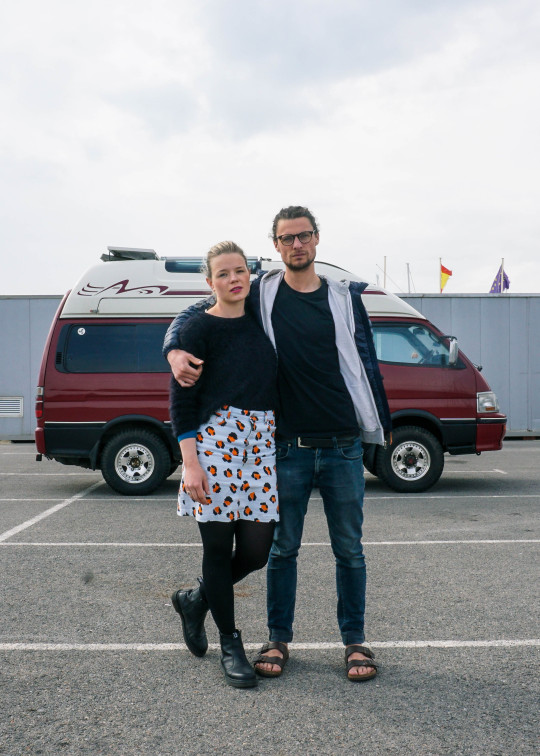
This blog post comes a few days late because I honestly couldn’t bring myself to write it. What do I write? Where do I begin? From a micro perspective, my life here has been pretty uneventful, and yet from the macro perspective, so much has happened around the world due to the outbreak of Covid-19 that it feels like we have enough news for a whole year from just one week. And yet, the only perspective I can write from is my own. Armed with the encouraging words of friends and family, I am inspired to push on and get some of the thoughts in my head and experiences from our ninth week ‘on the road’ down onto paper.
One of the ways I’ve started to see our experiences in lockdown is through this idea of duality.
Every situation that I’m in (and no doubt most of us are in) sort of seems to have two sides. I alluded to this in last week’s blog post, and the way in which it’s possible to see great sadness, selfishness and suffering at the moment, but also to be inspired by so many of the positive responses and the potential positive outcomes of this pandemic.
From a chronological perspective, our week has been divided into two clear halves, another duality of sorts. George and I spent the first half of the week in Suzi the Van, in the Marina in València which we’d been staying for a while. Whilst the Marina had all the basic amenities and we were safe there, the confines of a space that small were really taking its toll. On Tuesday, when I was made to return to the van by a security guard after attempting to walk short laps nearby, I broke down into tears. Never before have I valued the outdoors so much, wanted to stretch my legs and take in some fresh air. It was heartbreaking, and scary to lose a liberty I take for granted.
As urban areas seem to be hotspots for the virus, València was under tight control. A simple trip to the supermarket hammered that reality home, when George and I were asked by Police to walk on opposite sides of the street from one another, and a one metre distance was enforced by cashiers and guards in supermarkets. Gloves are mandatory in some supermarkets, and most folk you do see are wearing masks.
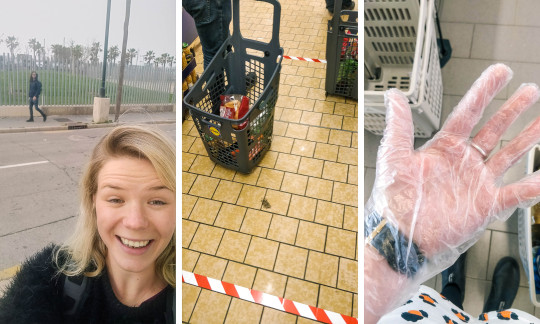
(images, left to right) Being made to walk on separate sides of the road in Valencia, tape marking out 1 metre separations in the supermarket, and gloves to be worn by customers.
Extreme measures quickly start to feel normal.
Whilst we tried to make the best of being in Suzi the van, having fun together and finding any possible way to entertain ourselves, the claustrophobia-inducing confines were soon wearing thin. After making arrangements with the family friend whose cottage we had stayed in a few weeks earlier in Catalonia, we quickly made the six-hour journey up north to return to their cottage as a safer lockdown spot. George and I were also conscious that restrictions on driving were only likely to tighten, so we made the escape while we could. That said, we weren’t stopped by Police the whole way up from València to Palamos.
Relying on the generosity of others can be a very humbling thing. I am reminded every day that I wouldn’t be here in Spain, with a safe place to stay during the (now extended) ‘State of Alarm’ if it wasn’t for the kindness of others. In times like these, I think we will see more sharing of resources, and the idea of asking for help becoming more normalised too. If I can help someone else in any way, please do reach out to me.

(images, left to right) Saying goodbye to Suzi’s parking spot at La Marina, silly antics as George refuses to get out of bed in the morning, and making our way north to Catalunya.
Since leaving València, the second half of our week has been rather more comfortable than the first, as we’re now in the countryside and with a house to stay in. That said, I’ve been pretty miserable these past few days, burdened with the knowledge of the global crisis and the impact it’s having on literally everyone I know. Which brings me to another duality -
Whilst those of us in lockdown who aren’t sick with the virus technically have all this unique free time to potentially make and create, the panic and anxiety induced by the situation can be crippling.
Obviously, everyone’s working situation is different: some people are working from home, others have lost their jobs, others are being paid some or all of their wage but don’t have any work to do, and then there are the doctors and nurses, supermarket attendants and maintenance workers who literally risk their lives to go to work and keep the situation afloat. But, looking more generally at the whole population, when else in history have so many people been given a chance to stay at home, with no routine and no commitments?
When trying to think positively, I have seen this lockdown as an opportunity for making and creating on an unprecedented scale, for people to use the freedom and inspiration as a platform for self-expression, a sentiment echoed countless times online too. And yet, even though I’ve managed to get things done and make things in this last week, it has always been counteracted by another feeling in my head and heart, one which has pushed against the desire to ‘do’ with a desire to… mourn? I’ve heard the anxiety triggered by the unknown of the future termed as ‘anticipatory grief’, and it’s exactly this which can cripple any desire or instinct to create and make. The idea of anticipatory grief is explored in an article which my friend Greg sent to me today, and I found it incredibly useful. You might do too.
Living with an unknown future is forcing a shift towards being more present.

(images) Small things that I am trying to grateful for, like fresh houmous, strawberries blooming and an open fire.
You don’t realise how much you base your life around an assumed future until that future crumbles into the unknown. I assumed that I would be able to fly home for a doctor’s appointment in April, I assumed that Las Fallas festival would take place in València and George and I would finish our commercial work linked to it, I assumed that we would catch a ferry to Italy and drive south-east through Slovakia and Croatia and that we would see our friends later in Greece as planned.
Obviously a big outcome of all those future things now being cancelled or uncertain causes anxiety and the ‘anticipatory grief’ that I mentioned. But it has also triggered a return to the present. I wonder if other, more mindful, cultures are generally more present-focussed because they don’t have the luxury of the certainty of the future - places where death is more frequent and disasters more likely to happen, unsheltered by the insurance and capital we are so ‘lucky’ to have in the Western world. For me, I am trying ever so hard to embrace the present. It is an uncomfortable feeling, to be okay and connected to the now rather than to what is to come, but it also feels like a very valuable mindset to nurture.
A focus on the present is perhaps why so many of us have suddenly connected with friends and family digitally. Of course, some of these calls are intended to replace what would usually be a face-to-face catch up, but for George and I, we wouldn’t be set to see a lot of people for a while as we’re overseas anyway. And so all these phone conversations, WhatsApp catch-ups, Zoom calls and Skype videos have been a direct action to bring those people that mean something to us closer. People are reaching out to each other, in the present, and are showing the gratitude, connection and care they have for each other through just saying hi. Perhaps we all forgot quite how important these people were to us because we were always thinking in the future?
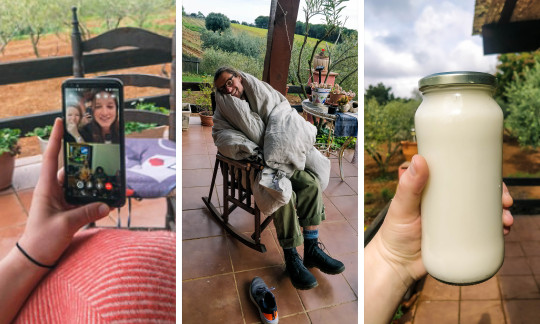
(images, left to right) Connecting with friends in Australia, George going a little bit insane, and my first attempt at making oat milk (which I would rate a totally mediocre 5/10) which was a good short-term distraction from the overwhelming global crisis and a good starting point to make improved versions!
I’ve also been reminded that the internet can serve to connect and inform, but it also has the potential to alienate and divide people.
I honestly can’t imagine experiencing lockdown without access to the internet. This week alone, I’ve probably read tens if not hundreds of useful, mind-expanding, informative news articles, in addition to opinion pieces and videos related and linked to coronavirus. I’ve been able to watch (along with 80 or so others) our friend Dan live-stream a spirit-lifting musical performance from his bedroom as part of the ‘Solo En Casa’ festival, and I’ve taken part in a genre-defying guided meditation by the wonderful Adam Martin from Gaba Podcast. My mum did her first online yoga class, my Dad has been playing virtual Scrabble with his friends, and that’s all on top of the phone calls and video calls that ping around between us all every day.
Yet whilst I sing its praises, the internet also has darker qualities in times like these. There are no ‘ground rules’ for the internet, and social media can start to become a bit of a Wild West where opinions get flung around and judgement passed. Lockdown restrictions seem to change everyday, and you see plenty of neighbourhood vigilantes who take it upon themselves to report and criticise other people for the rules that they break, people in government for the rules that they make, shoppers for the food that they take. I find myself engaging in this circle of judgement too, and yet it goes against the principles of community and solidarity that are needed now more than ever.
Not only does the internet make space for judgement, but for jealousy as well. In presenting selected elements of our lives we can create idealised images of what our lives are really like, and in sharing certain things we can highlight what others don’t have. Sharing photos and stories is a great way of connecting with others, but the flipside of this digital culture addicted to sharing is that we sometimes lose sight of what we have. This week, I’ve taken a bit of a step back from Instagram and Facebook both to focus on my present situation and the immediate world around me, and not to incite jealousy or comparison. I’m interested to see how I find this change.
Unrelated to the current pandemic, we’re incredibly excited to finally have a launch date for Broaden’s upcoming documentary, ‘The Hundred Miler’.
Announcing the release date was in part triggered because we realised that this is a time when people will be at home, available to watch an independent documentary about ultra running. But announcing the launch of The Hundred Miler also highlights another duality: that while there is a global crisis going on which involves a terrifying, easy-to-transmit illness causing an influx of deaths, the ‘normality’ of everyday life is running in parallel. People are still doing homework with their kids, others are watching Netflix before they go to bed and walking their dogs, and George and I are still trying to edit videos and launch Broaden.
And so, now seemed as good a time as any to finally get our first big film out into the world. We’ve created a facebook event to promote the launch on the 11th April, and throughout the runup in the coming three weeks we’ll be releasing snippets of the film too. I’d love for as many of you to join the facebook event and catch the video when it’s out.
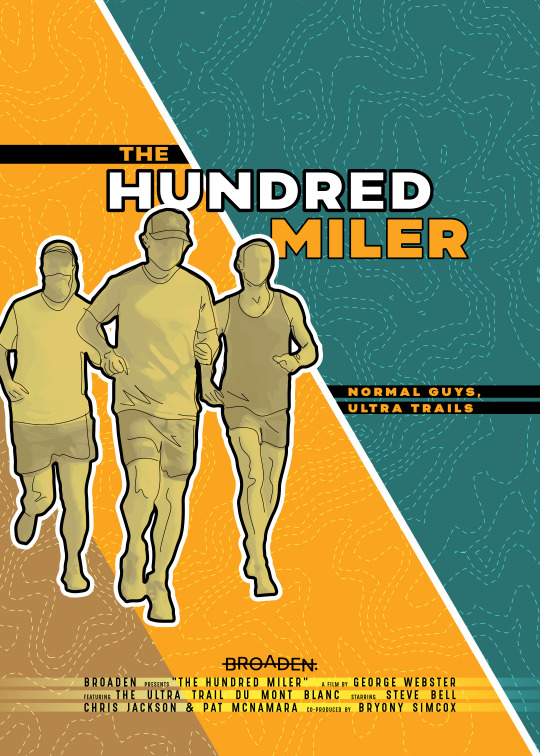
Having a creative project like this documentary throughout lockdown has been a lifesaver, as it’s pushed me to move towards the positive side of the dualities presented by coronavirus: trying to ‘do stuff’ rather than getting bored, trying to make something rather than being crippled by anxiety, trying to make the most of the space we have rather than feel trapped in our surroundings, trying to be present rather than fretting about the future.
All that considered, the critical word in the statement above is trying. I’m trying, and not always succeeding, to see the positive side of things. I think one of the reasons it took me a while to finally write this blog post is because I wanted it to come from an authentic place, and at first it felt like a failure that I didn’t have only good things to report. But in processing how I’ve been feeling these past seven days, the most authentic message is that I haven’t been purely positive, and things have been rough, and that that’s okay too.
The duality of life is what gives it character, and I think some of the dualistic qualities of this period of lockdown are what’s making it such a strange thing for us to all grapple with too.
Does any of this make sense? I hope so. I hope I’m not alone in these feelings and I hope that in some way this blog brings us closer together. These are strange and scary times, folks.
Stay safe and stay sane. x
0 notes
Text
Paper代写:Questions Based Draft on the Archangel Ivory
本篇paper代写- Questions Based Draft on the Archangel Ivory讨论了大天使象牙。大天使象牙作为拜占庭最大的象牙雕刻遗产,被保存在大英博物馆。大天使象牙刻画了一个年轻时身穿宽松长袍、手持权杖和帝国宝珠的大天使迈克尔,最高等级的天使,非常符合古典雕塑的风格。该作品作为拜占庭艺术的代表作,具有重要的地位,受到了艺术、历史、考古、建筑等诸多领域研究者的高度重视。本篇paper代写由51due代写平台整理,供大家参考阅读。
The Archangel ivory, as the largest Byzantine ivory panel legacy, is reserved in the Room 41 of the British Museum. It can date back to the early 6th century with depiction of an archangel who is an angel of the highest rank often known as Saint Michael. At that time, Eastern Roman with Constantinople as its center was ruled by Emperor Justinian, who carried out a series of projects. As a result, Byzantine style was emerged. It should be mentioned that Byzantine art means exactly “the art of the Eastern Roman Empire”, which “starts with the rule of Justinian in the sixth century and extends to the fall of Constantinople to the Ottoman Turks in 1453”(academyart.edu/onlineCourseContentOutline).
With its careful depiction of an archangel at young age wearing loose robe and and holding a sceptre and imperial orb, Saint Michael the Archangel is recognized as in accordance with the style of classical sculpture. To be more specific, details of his robe, curly and lush hair, expression and also the wreath on his head are all identified as classical motifs and convention. Moreover, as the right panel of a diptych with two panels that can be closed like a book, Saint Michael the Archangel was assumed to be an proof of Emperor Justinian’s strength and ambition, since Emperor Justinian was possibly the lost left panel(Robin 2000). It should be noted that Michael’s feet do not stand still and exactly on the stone steps, which makes him seem to walk down the steps or fly to the air, especially with his eyes looking towards the heaven where he came from and not glancing at audiences or human beings. All of these detail enables “more detailed telling of the sacred narrative”(Erika 1970). Interestingly, there are some Greek words at the top of the diptych, which can be translated as “Receive this suppliant, despite his sinfulness”. According to Robin(2000), it may be “an expression of humility on the part of Justinian”. But Marylyn(2004) translated it as “Receive these gifts, and having learned the cause”, and took it as “an inscription that continues on the lost second panel”.
There are historical changes in Byzantine art with the reign of Justinian I (527–565). Emperor Justinian not only obsesses with conquering other countries like Italy, North Africa or Spain, but also identified laws and imposed his own religious views in his empire and launched massive projects to building and restoring churches like Hagia Sophia. As we have learned in this course, many decorations in churches used the method of icon, and Saint Michael the Archangel is of no exception. The icon means to“bring one into the presence of the person who dwells in heaven”(academyart.edu/onlineCourseContentOutline), such as Virgin Mary and Jesus Christ. As is known, Saint Michael, as one of the most powerful messengers of the Christian God symbolizes as the fender of the Heaven and the God. At that time, this diptych might be an celebration of victories. It is said that Saint Michael the Archangel is an commemorative diptych of “a meeting in Constantinople in 519 between members of the Greek Orthodox Church and the pope’s representatives from Rome”(academyart.edu/onlineCourseContentOutline), and the meeting was held to restore the Roman Empire and unify the eastern and western parts of the empire. Therefore, Saint Michael the Archangel tells the message of Christians’ victory to re-unit the empire.
Furthermore, this image also speaks to the importance of Gothic architecture, and many Gothic buildings especially churches are decorated with sculptures and paintings related to saints’ lives a case in point is Hagia Sophia, which is located in Constantinople and can be seen as the symbol of the Byzantine Empire. Moreover, as one of the most powerful and significant empire in history, Byzantine Empire has great influence on counties nearby, especially some Eastern Orthodox countries such as Greece, Serbia, Bulgaria, Romania, Russia and other to the present day. Many artistic traditions emerged during the reign of Byzantine Empire, such as church architecture and icon works. Up to now, Byzantine ivories are “highly prized in western Europe, where they survived in church treasuries or were incorporated into deluxe book bindings”(Erika 1970).
In conclusion, Saint Michael the Archangel as an famous representative work of Byzantine art, is of great importance and has drawn high attention from many researchers from many fields such as art, history, archaeology and architecture and so on.
Works cited:
[1]Cole, Erika. “A New Way of Thinking in the Medieval Ages: The Deposition from the Cross Proves to Be An Advanced Piece of Its Time.” Erika Cole, The Honors College, University of North Texas, 1 Jan. 1970, eaglefeather.honors.unt.edu/2015/article/329.
[2]Cormack, Robin. Oxford History of Art. Oxford University Press, 2000.
[3]Durand, Jannic. Byzantine Art. Easton Press, 2004.
[4]“Log In.”Academy of Art University, discussion.academyart.edu/onlineCourseContentOutline? section=161125.
[5]Stokstad, Marilyn. Art History. Pearson Prentice Hall, 2009.
[6]Stokstad, Marilyn. Medieval Art. Westview, 2004.
要想成绩好,英国论文得写好,51due代写平台为你提供英国留学资讯,专业辅导,还为你提供专业英国essay代写,paper代写,report代写,需要找论文代写的话快来联系我们51due工作客服QQ:800020041或者Wechat:Abby0900吧。
0 notes